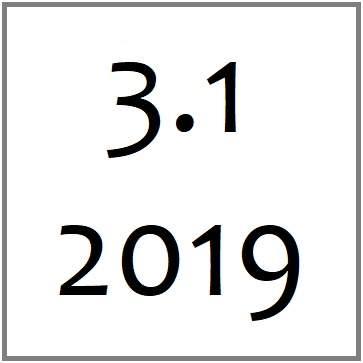Rural and Native American Students’ Utilization of Autobiographical Comic Strips to Explore Their Identities through Digital Storytelling in the Multimodal Writing Classroom
Smaller Text Version | Larger Text Version | PDF
Appendix 2: Selected Tables
Table 1. Students’ Demographic Characteristics
N = 60 students
|
Race |
Caucasian 51% (31) |
Native American 40% (24) |
Hispanic/ Latino 4% (2) |
African-American 3% (2) |
Asian/Pacific Islander 2% (1) |
|
Age |
18-21 60% (36) |
22-25 43% (>26) |
26-29 1% (>1) |
35-39 1% (>1) |
45-49 3% (>2) |
|
Annual Household Income |
$0-15,000 24% (14) |
$16,000-30,000 27% (16) |
$31,000-45,000 12% (7) |
$46,000-60,000 15% (9) |
> $60,000 22% (13)
|
|
Permanent Residence |
Oklahoma 79% (47) |
Texas 21% (13) |
NA |
||
|
Town Size |
Under 5,000 52% (31) |
5,000-10,000 22% (13) |
11,000-20,000 13% (8) |
30,000-50,000 11% (7) |
60,000 + 2% (1) |
Table 2. Students’ self-reported outcomes in the Reflective Essay upon completing the Comic Strip
N = 60 students
|
Academic Outcomes for Comic Strip and Reflective Essay Assignments |
|
Strengthened critical thinking and research skills 85% (51) |
|
Strengthened multimodal reading skills 92% (55) |
|
Strengthened multimodal writing skills 95% (57) |
|
Proved useful in learning more about comics as a multimodal genre 78% (47) |
|
Strengthened collaborative practices 75% (45) |
|
Promoted educational and personal interests 65% (39) |
|
Prompted student to consider continuing to make comics in future 32 % (19) |
Table 3. Themes for character traits, plotlines, genre aspects, inclusion of other characters and setting that students generated in the Comic Strip
|
Main Character’s Traits |
|
Character has a secret power/skill (1) or special prop, like a crown (2). |
|
Character has a known flaw/weakness (2). |
|
Character represents a superhero (3); an everyday hero at home (3) or work (1); or an immigrant (1). |
|
Cartoon Strip Plotline Type |
|
Comic relies upon causal events, with a beginning and ending, and the story is a comedy (15); tragedy (4); or mystery (1). |
|
Comic is a slice-of-life description of the character and shows a series of standalone moments or events (37). |
|
Story is about a traumatic event, including a death in the family (1), a divorce (1), cancer (1), or an injury (1); a mental condition, such as depression (1) or being tired (8); an existential fugue state (2); the area’s drug culture’s negative effects (2); or a natural disaster, including a fire (1), a tornado (1), or a hurricane (1). |
|
Genre Aspects |
|
Comic involves a lesson (3) or town myth (4) the character learns. |
|
Story is realistic (48). |
|
Story has supernatural, dream, or fairytale-like aspects (12). |
|
Story includes a self-reflexive look at composing the comic strip (4) or anime themes (1). |
|
Secondary Characters |
|
Story is about/mentions the author’s child/ren (11). |
|
Story is about/mentions the author’s spouse/significant other (9), siblings (5), or friends (15). |
|
Story is about/mentions the author’s pet(s) (3). |
|
Story has a guide, including a parent, god figure, coach, etc. (7). |
|
Settings |
|
Story is about a job, past or current (6), including at gas stations (2), construction (1), casinos (3), offices (1), daycares (1), fast food (2), and in the Army (1). |
|
Story is about/mentions the author’s home (9), including a farm or ranch (13). |
|
Story is about/mentions attending school (1), including home school (4), attending college (30), and making career plans (24), including teaching (8). |
|
Story is about a hobby, including sports (8), racing (2), acting (1), singing (2), baking (1), drawing (1), reading (3), writing (3), traveling (4), or visiting theme parks (2). |
Table 4. Raters’ assessment of students’ outcomes upon completing the Comic Strip
N = 60 students
|
Writing Outcomes for the Cartoon Strip |
Percentage of Assignments Associated with Each Outcome, with “1” Being the Lowest and “5” the Highest |
||||
|
|
Fails to Meet Requirements 1 |
Fair
2 |
Meets Requirements 3 |
Good
4 |
Excellent
5 |
|
Synthesis of Information and Cohesion |
5% n = 3 |
5% n = 3 |
50% n = 30 |
20% n = 12 |
20% n = 12 |
|
Development and Clarity |
5% n = 3 |
10% n = 6 |
25% n = 15 |
20% n = 12 |
30% n = 18 |
|
Diction, Style, and Voice |
10% n = 6 |
15% n = 9 |
35% n = 21 |
25% n = 15 |
15% n = 9 |
|
Audience and Genre Requirements |
5% n = 3 |
15% n = 9 |
35% n = 21 |
25% n = 15 |
20% n = 12 |
|
Artwork |
5% n = 3 |
35% n = 21 |
40% n = 24 |
10% n = 6 |
10% n = 6 |
